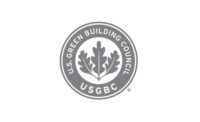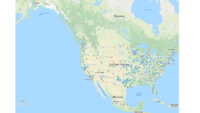The U.S. Green Building Council (USGBC) now estimates that there are as many as 150,000 LEED-certified green housing units worldwide, a number that more than doubled between 2011 and 2012 and continues to grow steadily, according to the organization’s LEED in Motion: Residential report released today.
The report is the latest in USGBC’s popular LEED in Motion series designed to equip readers with the insight and knowledge to understand LEED, the world’s most widely used and recognized green building rating system, and to make the case for sustainable building practices worldwide. The report also details the U.S. states with the most LEED-certified homes, with California in the No. 1 spot followed by New York and Texas.
With the official start of summer just days away and Americans bracing for higher energy bills, the benefits of LEED-certified houses are even more pronounced. LEED-certified homes provide 20 to 30 percent savings in energy and water use compared to code-built homes, and they maximize fresh air indoors while minimizing exposure to airborne toxins and pollutants.
“Our homes are more than just spaces that provide shelter,” said Rick Fedrizzi, president, CEO and founding chair, USGBC. “Homes touch practically every aspect of our lives and are a critical element of our overall sense of safety, identity and community. Enhancing our homes’ efficiency and resilience offers an extraordinary opportunity to further the revolution in sustainable building and living practices so that it ripples outward to our communities. As demonstrated in LEED in Motion: Residential, this movement is already well under way.”
Featuring a foreword from Nest CEO and founder Tony Fadell, the report explores the multiple LEED rating systems for different types of homes, including new single-family homes as well as new and existing low-rise, mid-rise and high-rise multifamily buildings. USGBC is also developing a rating system for existing single-family homes.
Highlights of the LEED in Motion: Residential report include:
- USGBC’s vision for sustainable living spaces, including ongoing monitoring of home performance and accomondation for the growing number of people living in cities.
- Examples of the widespread momentum in green residential building with green home project profiles that highlight successful strategies and outcomes.
- Interviews with green building thought leaders such as Tom Darden, executive director of Make It Right, which has built more than 100 LEED Platinum homes in the Lower Ninth Ward of New Orleans to replace housing destroyed by Hurricane Katrina in 2005.
- Profiles of successful projects such as Cincinnati’s Community Reinvestment Area Residential Property Tax Abatement program, in which 192 LEED-certified homes are currently participating.
- Recognition of the top 10 countries for LEED, demonstrating the international growth of green housing and profiling Gulnar Homes in Turkey, developers of a LEED Gold home in Istanbul.
LEED in Motion: Residential also highlights the importance of local policy in spurring the uptake of green homes as well as noting the important connections between green homes and occupant health and well-being.
The report is currently available as a free download on the USGBC Web site at go.usgbc.org/homes with hard copies available at Dwell on Design Los Angeles, the largest design event in the U.S., June 20-22, 2014.








